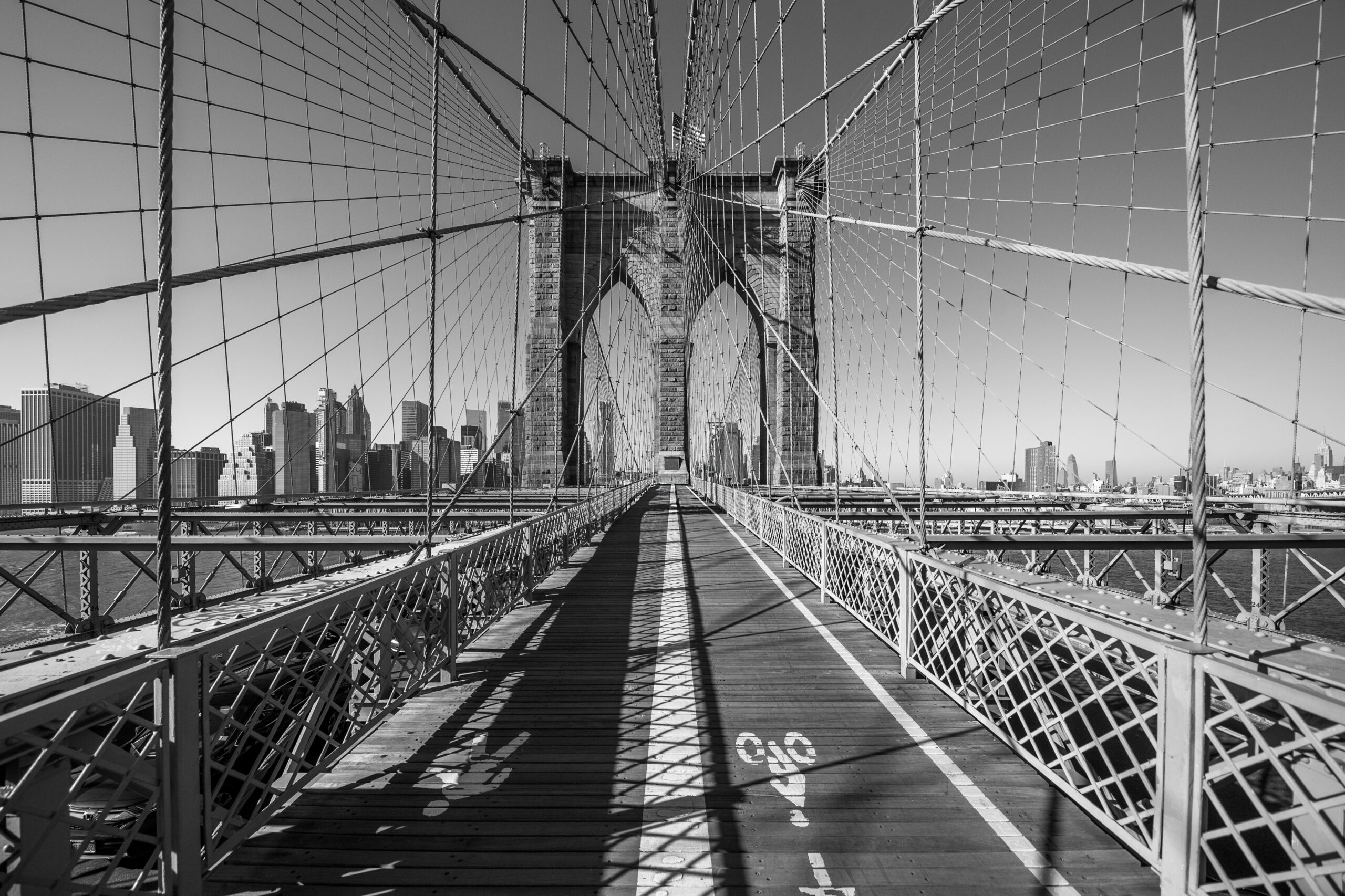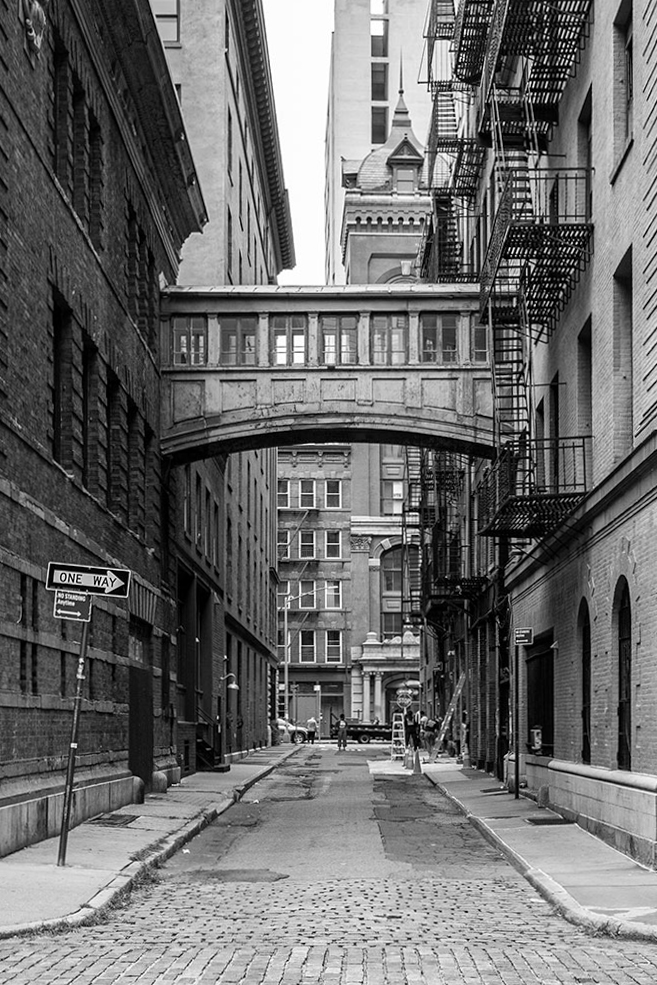Black and white photography in New York City captures the monochrome essence of the metropolis in a way that color images often can’t. By stripping away the hues, photographers are able to emphasize contrasts, details, and the raw emotion of the cityscape. This monochromatic approach to capturing NYC’s iconic structures offers a unique perspective, allowing viewers to see the city through a different lens.
-
 2020 Bridge$ 99.00
2020 Bridge$ 99.00 -
 Snow Elephant$ 99.00
Snow Elephant$ 99.00
Historical context: Evolution of monochrome imagery
Black-and-white (B&W or B/W) images combine black and white to produce a range of achromatic brightnesses of gray. The history of visual media began with black and white, evolving to color as technology advanced. Yet, black-and-white fine art photography has always held a special place in the world of visual arts, particularly in capturing urban landscapes like New York City.
In the realm of film, the transition from black and white to color marked a significant shift. However, many art films and motion pictures still chose the monochrome palette for its artistic value. For instance, 1961 was the last year the majority of Hollywood films were released in black and white, highlighting the commercial pressures of transitioning to color.
The essence of black and white: Amplifying NYC’s contrasts
When we think of black and white photography in New York City, we often envision the stark contrasts of the urban jungle. The towering skyscrapers cast long shadows, while the intricate details of historic buildings stand out more prominently without the distraction of color.
Monochrome photography emphasizes textures, patterns, and shapes. In a city as architecturally diverse as New York, this means that every brick, window, and facade tells a story. The absence of color allows the viewer to focus on the play of light and shadow, the rhythm of the streets, and the geometry of the buildings.
Iconic NYC structures in monochrome: A new perspective

The Empire State Building: In the realm of black and white photography in New York City, the Empire State Building stands tall, both literally and figuratively. This iconic structure, when captured in grayscale, exudes a dramatic aura. The absence of color accentuates its art deco details, making them even more pronounced and allowing the viewer to appreciate the architectural intricacies that might otherwise be overshadowed by the bustling cityscape around it.
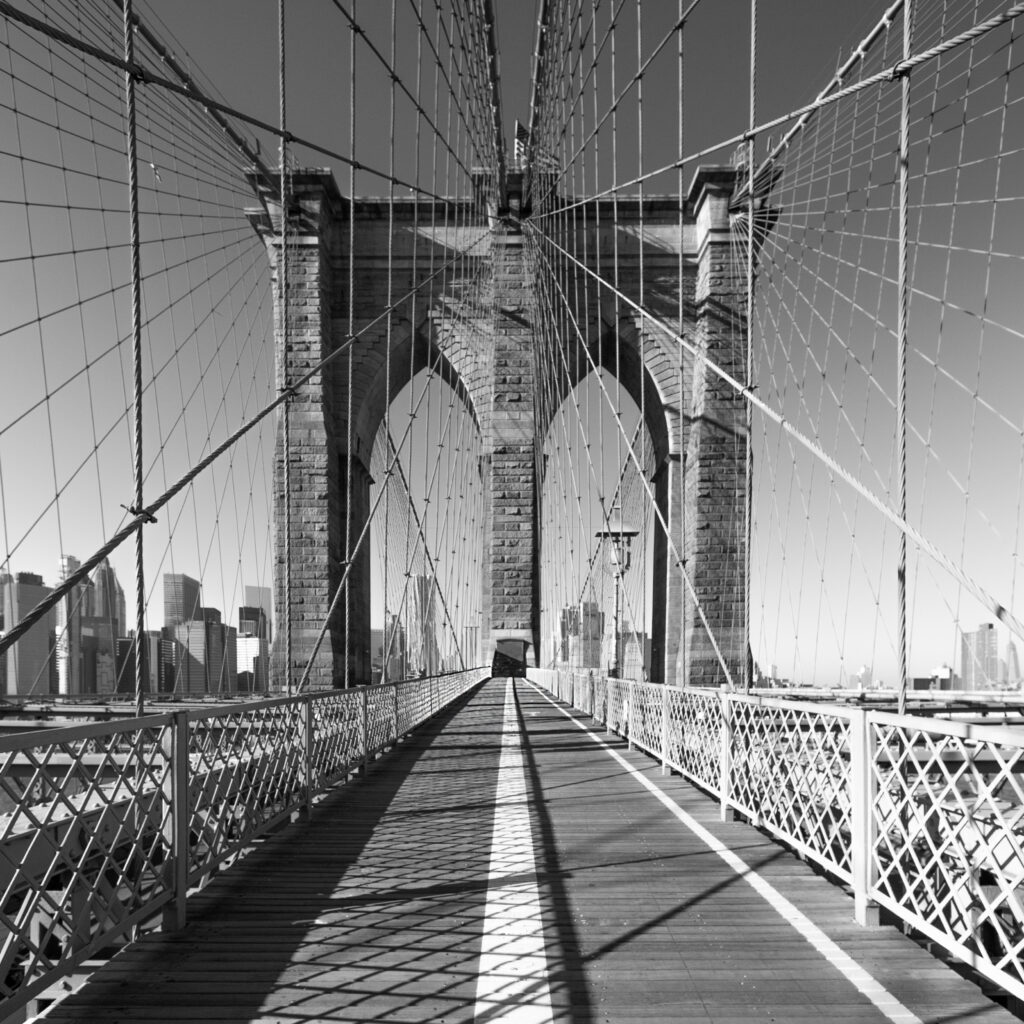
The Brooklyn Bridge: The Brooklyn Bridge, with its intricate web of cables and towering pillars, offers a visual treat when photographed in monochrome. The cables create mesmerizing patterns against the sky, especially during the golden hour when the sun casts long shadows. The bridge’s historic charm is further amplified in black and white, highlighting its enduring presence against the backdrop of the ever-evolving city.
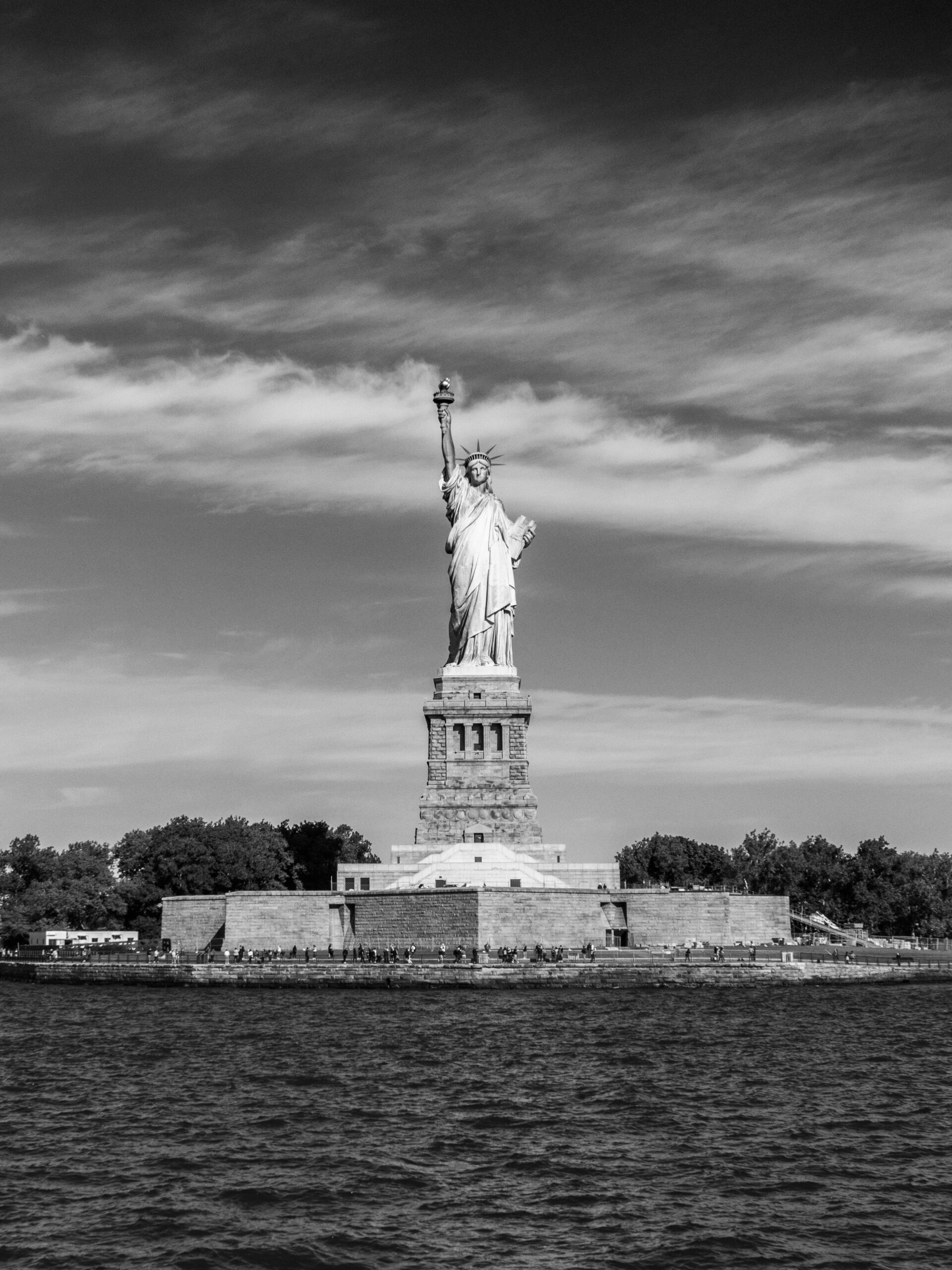
The Statue of Liberty: The Statue of Liberty, an emblem of hope and freedom, takes on a new dimension when photographed in monochrome. Stripped of its familiar green hue, the statue emerges with a heightened sense of gravitas. Its features, highlighted in stark relief against the backdrop of the harbor, serve as a powerful reminder of the ideals it represents, especially when captured in the timeless medium of black and white photography.
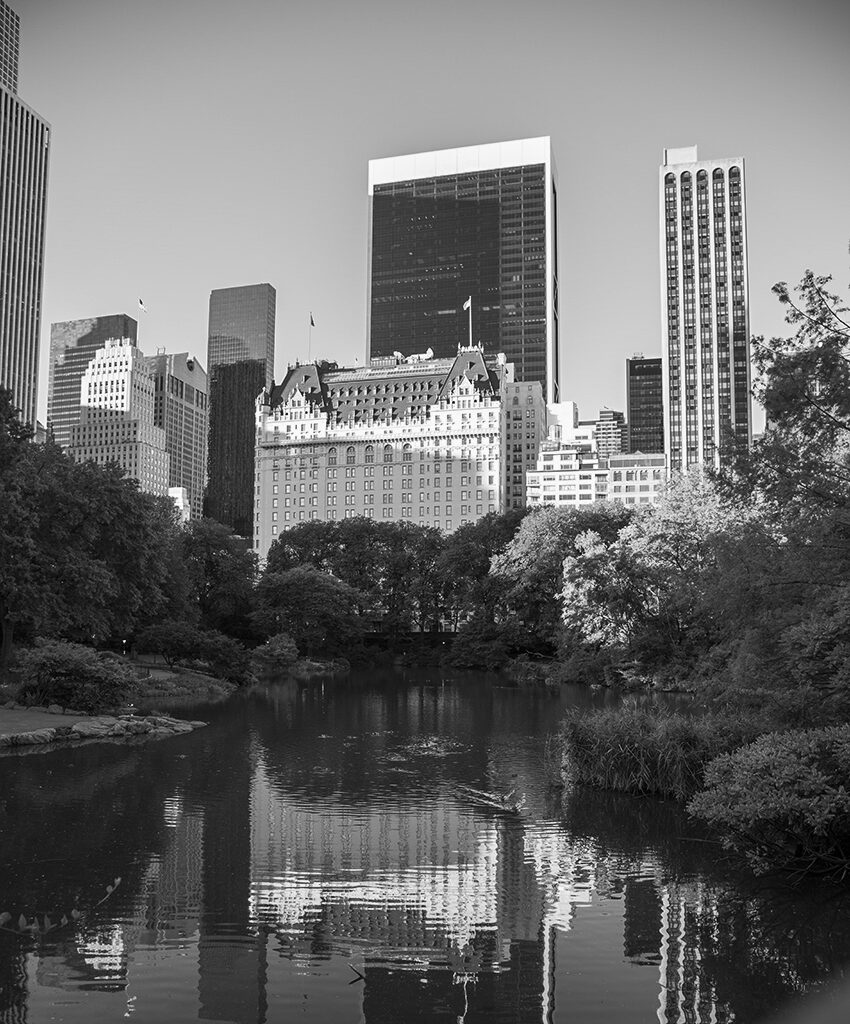
Central Park: Central Park, a verdant oasis in the heart of the city, takes on a different character when viewed in black and white. Without the vibrant greens, the park transforms into a serene landscape of contrasts. The still waters of its ponds reflect the surrounding trees, creating silhouettes that stand stark against the skyline, offering a tranquil escape from the urban hustle.

The Flatiron Building: The Flatiron Building, with its distinctive triangular shape, is a marvel of architectural design. When captured in black and white, its geometric perfection becomes even more captivating. The play of light and shadow on its facade emphasizes its unique form, making it a favorite subject for photographers seeking to showcase the architectural wonders of New York City.
Techniques for capturing NYC in black and white
Choosing the right time of day
Timing is crucial in photography. The golden hour, that brief period shortly after sunrise and just before sunset, offers a soft, warm light that can add depth and dimension to black and white images. On the other hand, the blue hour, which occurs before sunrise and after sunset, provides a cooler, more diffused light. This can emphasize the architectural details of New York City’s structures, making them stand out in monochrome.
Composition: Framing the urban jungle
Composition is the arrangement of elements within a photograph. In black and white photography in New York City, it’s essential to focus on lines, shapes, and patterns. The city’s skyline, with its mix of historic and modern buildings, offers endless opportunities for compelling compositions. Look for contrasts, such as the juxtaposition of a classic brownstone against a sleek skyscraper. Use leading lines, like subway tracks or streets, to guide the viewer’s eye through the image.
Post-processing: Enhancing contrasts and tones
Once you’ve captured your image, post-processing can elevate it to the next level. Tools like Photoshop offer a range of options to enhance the contrasts and tones in black and white images. Adjusting the brightness and contrast can make the architectural details pop. Dodging and burning, techniques that lighten or darken specific areas of an image, can add depth and dimension. Filters can also be applied to mimic the effects of traditional darkroom techniques, adding an authentic touch to digital images.
The emotional impact of monochrome structures
Evoking nostalgia and timelessness
Black and white photography in New York City has a unique power to transport viewers back in time. Without the influence of modern colors, images can feel as if they’ve been plucked from a bygone era. This sense of nostalgia is amplified when capturing historic structures, like the brownstones of Brooklyn or the cobblestone streets of the Meatpacking District. These monochromatic images serve as a bridge between the past and the present, reminding us of the city’s rich history and ever-evolving nature.
The rawness of urban life without distractions
Stripping away color can also strip away distractions, allowing the raw emotion of a scene to shine through. The hustle and bustle of Times Square, the quiet contemplation of a lone pedestrian in Central Park, or the determination of a street performer in the subway—all these moments can be captured with heightened intensity in black and white. Without color, viewers are drawn to the emotions, expressions, and stories unfolding before them.
Modern applications and trends
Black and white in contemporary art and advertising
Today, black and white photography in New York City is not just a nod to the past but a contemporary choice for many artists and advertisers. In the world of art, monochrome images are celebrated for their simplicity and depth. Galleries across NYC regularly feature black and white exhibits, showcasing both emerging and established photographers.
In advertising, brands often opt for black and white imagery to convey sophistication, elegance, or authenticity. Whether it’s a luxury fashion campaign shot against the backdrop of the city’s skyline or a gritty streetwear ad set in the boroughs, black and white continues to be a powerful tool for storytelling.
The resurgence of monochrome in the digital age
With the advent of digital photography and the ubiquity of color images on social media, one might assume that black and white would fade into obscurity. However, the opposite has proven true. Many photographers, both amateur and professional, are rediscovering the beauty of monochrome. Mobile apps and digital filters have made it easier than ever to experiment with black and white, leading to a resurgence of interest in this timeless medium.
Challenges and criticisms
The debate: Color vs. black and white
The choice between color and black and white photography in New York City has been a topic of debate for decades.
Some argue that color offers a more accurate representation of reality, capturing the vibrancy and diversity of the city. Others believe that monochrome provides a deeper, more introspective look into the soul of NYC, free from the distractions of color.
While color can convey the mood, atmosphere, and energy of a scene, black and white can distill it to its essence, focusing on form, texture, and contrast.
Ultimately, the choice between the two is subjective and depends on the photographer’s vision and intent.
Overcoming common misconceptions
1. “Black and white is easier.” Some believe that shooting in black and white is a shortcut, a way to bypass the complexities of color composition. In reality, monochrome photography presents its own set of challenges. Without color, photographers must rely on other elements, such as lighting, contrast, and composition, to create a compelling image.
2. “It’s just a filter.” With the rise of digital photography and editing software, it’s easy to convert any image to black and white with a single click. However, truly impactful monochrome images are often the result of careful planning, composition, and post-processing.
3. “Black and white is outdated.” While monochrome photography has its roots in the past, it remains a powerful and relevant medium today. Many contemporary photographers choose black and white to convey timeless themes, evoke emotions, or make a statement.
Conclusion: The enduring legacy of black and white photography in NYC
Black and white photography in New York City is more than just a stylistic choice—it’s a testament to the city’s enduring spirit. Through the lens of monochrome, NYC’s iconic structures, bustling streets, and diverse inhabitants are captured in a way that is both timeless and evocative.
As technology advances and trends come and go, the power of black and white remains constant. It serves as a reminder of the city’s rich history, its ever-changing present, and its boundless future. Whether viewed in a gallery, a magazine, or a digital feed, black and white images of NYC will always captivate, inspire, and resonate with viewers.
Looking forward: The future of monochrome urban captures
The intersection of technology and artistry
As we move further into the digital age, the tools available to photographers continue to evolve. Advanced camera sensors, AI-driven editing software, and augmented reality are just a few of the innovations shaping the future of photography. But how will these advancements influence black and white photography in New York City?
1. Advanced Sensors: Modern camera sensors are becoming increasingly sensitive to light and detail. This means that future monochrome images will capture even more intricate details of NYC’s architecture, from the texture of bricks to the reflections in glass skyscrapers.
2. AI-Driven Editing: Artificial intelligence is revolutionizing post-processing. Future software might automatically adjust contrast, lighting, and composition in real-time, allowing photographers to preview their black and white images as they shoot.
3. Augmented Reality (AR): AR could offer a unique twist to monochrome photography. Imagine viewing NYC through AR glasses that instantly convert the bustling, colorful city into a serene black and white landscape.
Sustainability and Urban photography
As concerns about climate change and sustainability grow, cities worldwide, including New York, are undergoing transformations. Green buildings, vertical gardens, and sustainable architecture are becoming the norm. Black and white photography will play a crucial role in documenting this shift, highlighting the contrasts between the old and the new, the industrial and the sustainable.
The continual allure of simplicity
Despite technological advancements, the allure of black and white photography remains rooted in its simplicity. Stripping away color forces both the photographer and the viewer to see the world differently, to focus on the essence of a scene. As NYC continues to evolve, so will the ways photographers capture its spirit. Yet, the timeless appeal of monochrome will remain a constant, a testament to the city’s enduring charm and the artistry of those who document it.
Broader implications: Beyond the boundaries of NYC
Black and white photography in the context of global urbanization
As cities around the world continue to grow and evolve, the challenges and triumphs of urbanization become central themes in photography. Black and white photography in New York City serves as a microcosm of these global narratives. The stark contrasts, the play of light and shadow, and the timeless appeal of monochrome capture the essence of urban life, from the bustling streets of Tokyo to the historic alleys of Rome.
The universality of black and white imagery allows photographers to draw parallels between cities, highlighting both their unique characteristics and shared experiences. As urban centers grapple with issues like housing, transportation, and sustainability, monochrome photography provides a platform to document, critique, and celebrate these transformations.
Universal themes in monochrome
Beyond architecture and urban landscapes, black and white photography touches on universal human themes. Love, loss, hope, despair, joy, and sorrow—all these emotions find expression in monochrome. The absence of color allows for a deeper, more introspective exploration of these themes, making the images relatable to viewers from diverse backgrounds and cultures.
In conclusion
Black and white photography in New York City is more than a visual medium—it’s a reflection of the city’s soul, its history, and its future. As we look ahead, the power of monochrome remains undiminished, capturing moments in time and telling stories that resonate across generations.
From the iconic structures of NYC to the broader narratives of urban life, black and white photography serves as a bridge between the past and the present, between the local and the global. In a world saturated with color and noise, the simplicity and depth of monochrome offer a respite, a moment of reflection, and a timeless connection to the essence of humanity.
Thank you for embarking on this journey through the lens of black and white photography. May the contrasts, details, and stories inspire you to see the world with fresh eyes.



